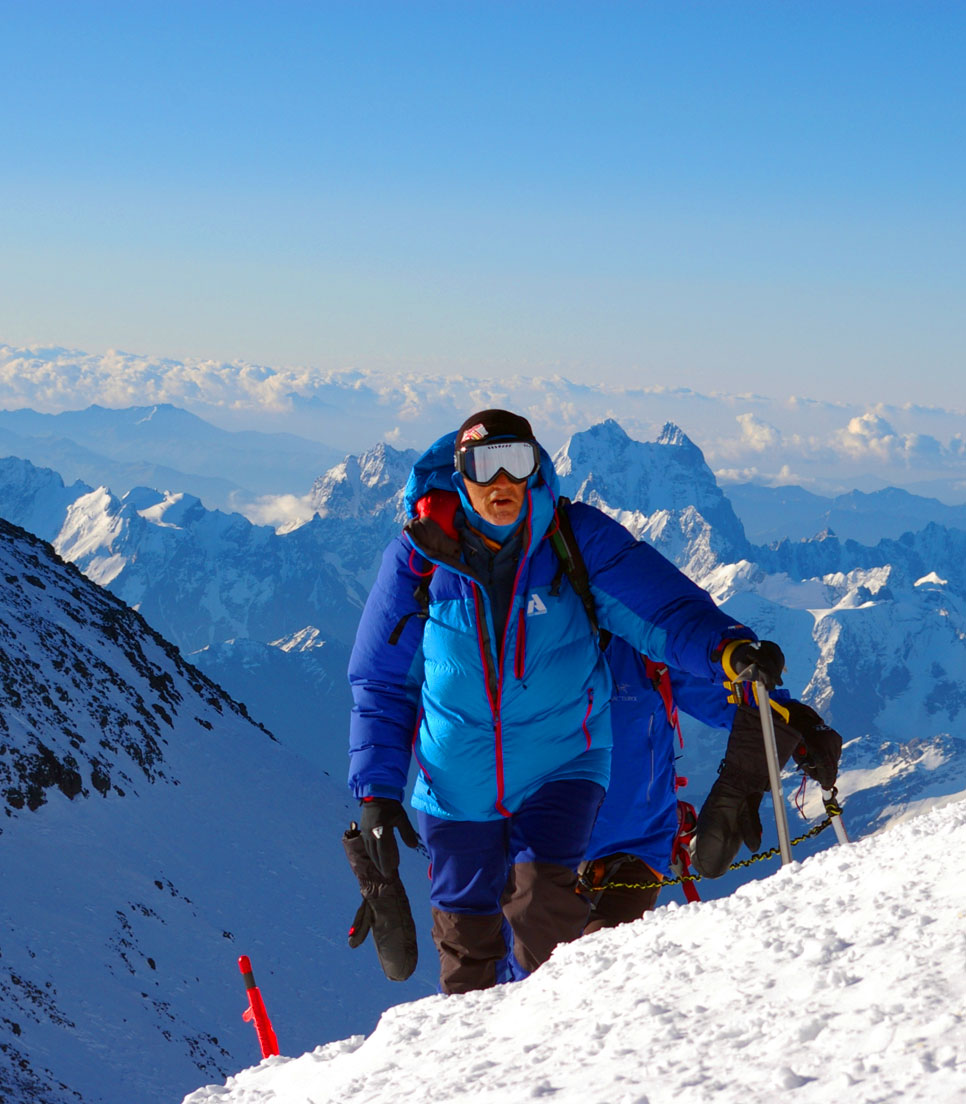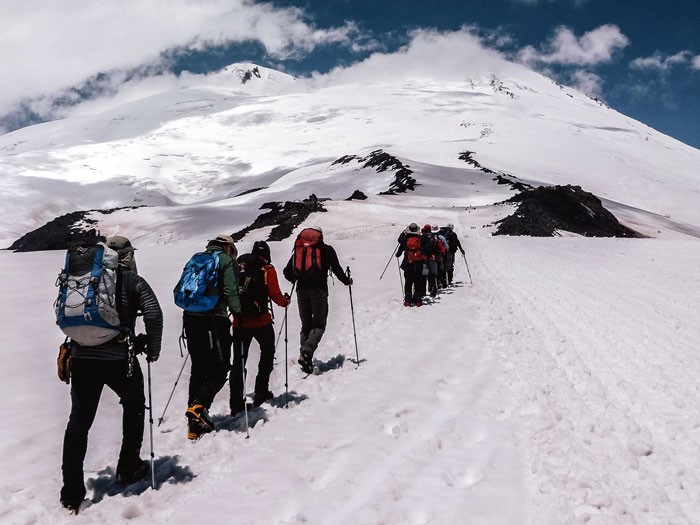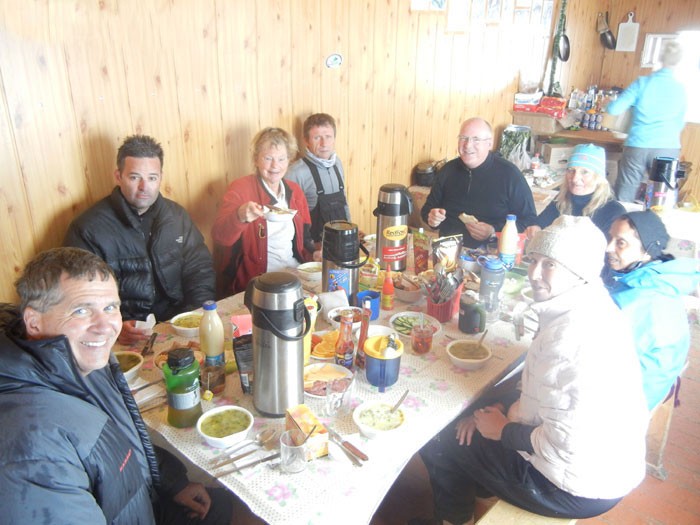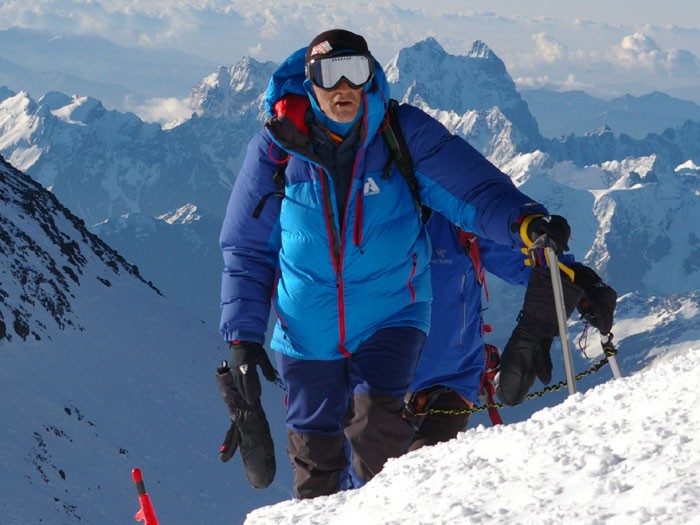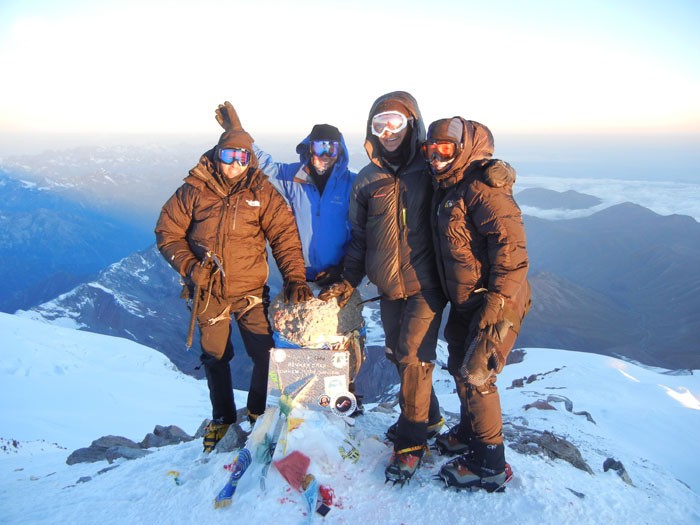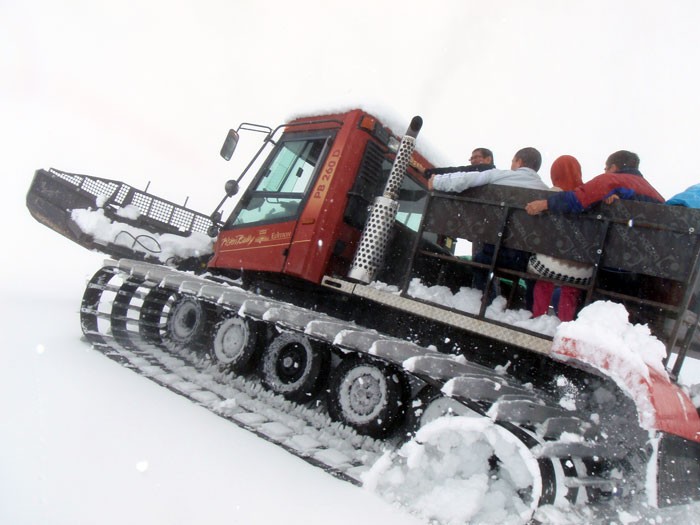Here is what Alan says: "I had a very good experience on this unforgettable expedition. The trip was well organized and I liked the leader. He was full of energy and humour."
Elbrus Expedition - Russia
Elbrus Expedition - Russia
Normal Route Full Service Cost: $3,300, £2,650, €3,300. (fixed in USD)
Ski Tour Full Service Cost: $3,400, £2,750, €3,400. (fixed in USD)
Dates: Please contact us for details info@summitclimb.com
Easy and safe snow climb to 5,642 meters (18,510 feet).
Expedition to the top of the highest peak in all of Europe. One of the famous "7 Summits.”
Mount Elbrus is the highest mountain in all of Europe, and one of the fabled Seven Summits. Perched in the Caucasus Mountains at 5,642 meters (18,510 feet), Mt. Elbrus is one of the best ways to test yourself at high altitude in a short amount of time. In addition to spectacular scenery, we will also experience one of Europe's richest and most unique cultures, as we trek and climb in Russia near the border to Georgia.
The route leads through a large ski area with good infrastructure, a comfortable hut to the exit of the ascent, and is by far the easiest route to the summit. A well thought-out travel plan and a great view of the Caucasus awaits us. Experienced mountain guides accompany you to the roof of Europe.
Our full-service expedition includes:
- Experienced British, European, or American leader
- Shared hotels after leaving and before returning to Piatigorsk
- All meals after leaving and before returning to Piatigorsk and at Elbrus basecamp
- Transportation from Piatigorsk to the base of Elbrus and back
- Tram and chair lift rides used for acclimatizing and transport to basecamp huts
- Assistant guides and cooks
- Group climbing and safety equipment
Not Included:
- Hotel and meals in Piatigorsk
- Airport transfer
- Personal (non-shared) room in Azau Village, $50/ night
- Personal equipment and clothing
- Russian visa
- Staff and leader tips
- Travel Insurance
- Favorite snack foods. 1 kg / 2 pounds is a good amount (you may buy these in Piatigorsk)
- Snowcat for summit attempt. These costs are approximate and paid prior to summit attempt in Rubles.
- Snowcat to 4700 meters - $ 150 USD
- Snowcat to 5100 meters - $ 300 USD
- Personal Guide for Summit Day - they are available for a daily fee of $600 USD (This must be arranged at time of booking)
- Snowcat or snowmobile to huts on descent (from 4,700 meters) - $100
2) 4 hour bus ride to a hotel in Azau Village, 2,200 meters (7,218feet). Equipment check, orientation, andopportunity to rent or purchase needed equipment in Azau or Cheget
3) Acclimatization ascent (using ski lifts if possible) of Cheget Mountain, 3,450 meters (11,319 feet). Stay in Azau hotel.
4) Ride tram and ski lifts toan acclimatization hike on Elbrus slopes up to 4,200 meters (13,780 feet). Stay in the Azau Hotel
5) Ride tram and ski lift. Set up base camp at Barrels huts 3,800 meters (12,467 feet) or huts above Diesel Hut, 4,100 meters (13,451 feet). Acclimatization hike to
4,500 meters (14,764 feet) and basic ice/snow/rope/self-belay practice. Sleep in hut.
6) Acclimatization hike up to 4,900 meters (16,076 feet). Sleep in hut.
7) Climb to Elbrus summit at5,642 meters (18,510 feet). Descend to base camp. Sleep in hut.
8) Extra summit day/ Descend (ski lift) and transfer to MineralnyeVody.
9) Fly home - Say goodbye to new friends and depart Piatigorsk by taxi to Mineralnye Vody (MRV) airport.
Climbing:
- Climbing harness
- 5 meters (16 ft.) of 6mm accessory cord
- Figure 8 abseil/belay device (tube style devices, i.e. ATC will not work on fixed lines)
- Full size ascender (i.e. PetzlAscention)
- 2 locking carabiners, 1 large and 1 small
- 4 non-locking carabiners
- Ice axe with leash
- Steel crampons with anti-balling plates
- Trekking poles
Upper Body:
- 2 cotton t-shirts
- Synthetic t-shirt
- Long sleeve synthetic shirt
- Light-weight soft shell jacket
- Medium weight insulatingjacket (fleece, down, or synthetic)
- Hard shell jacket with hood, waterproof and breathable (Gore-Tex or similar)
- Heavy down coat - a very warm down coat with hood or an 8,000m coat with hood
Hands:
- Lightweight poly-liner gloves
- Mid-weight soft shell gloves – water/wind resistant
- Heavy- weight waterproof gloves – Gore-tex shell with removable liner
- Expedition weight mittens -Gore-tex over mitt matched polar fleece mitt liner
Head:
- Helmet
- Warm hat that covers your ears
- Balaclava
- Face mask
- Baseball hat or brimmed sun hat
- Glacier sunglasses with side shields
- Ski goggles with light and dark lenses
- Glasses with clear lenses to protect your eyes while climbing to the summit on windy nights. (cost less than 10 dollars in Kathmandu)
- Headlamp with extra batteries and bulbs
- Buff/neck gaiter
- Bandana or head scarf (optional)
Lower Body:
- Synthetic underwear
- Hiking shorts
- Hiking pants
- Lightweight thermal bottoms
- Medium or expedition weight thermal bottoms
- Polar fleece or soft shell pants
- Waterproof/breathable pants with full side zips (Gore-Tex or similar)
- Heavy insulating pants - Down or synthetic pants will full zips
Feet:
- Boots: Plastic or composite double boots (Koflach, La SportivaSpantik, etc) Modern waterproof, single boots designed for 4-5,000m peaks may be suitable if they can be worn with 2 pairs of socks and vapor barrier lines and/or they are equipped with overboots
- Sturdy leather walking boots
- Trainers, running shoes and/or sandals
- Down booties (optional)
- 2 pair med-heavy poly or wool socks
- 2 pair poly or wool liner socks (optional)
- Vapor barrier liner socks (optional)
- 2 pair lightweight trekking socks
- Cotton socks for in town
Sleeping:
- Down sleeping bag rated to -18C or 0F
Rucksack and Travel Bags:
- Large rucksack/backpack (80+ litres / 5,000+ cubic inches)
- Daypack/summit pack
- Waterproof rucksack covers (optional)
- Large (120+ L / 7500+ cubic inch) duffle kit bags for clothing and equipment
- Small luggage locks for duffel kit bags
Personal Hygiene:
- Female or male hygiene supplies
- 2 tubes lip sun cream
- Large tube skin sun cream (min factor 30)
- Anti-mosquito cream
- Toothpaste/brush
- Hand sanitizer gel (small bottle)
- Bar of soap small towel
- Hand wipes
- Face Mask
- Hand sanitiser
- Disposable gloves
- Disinfectant wipes
Medical:
- Small personal first-aid kit. (Simple and Light) Aspirin, first-aid tape, plasters (band-aids), personal medications, etc.
- Blister repair kit
- 10 anti-diarrhea pills
- 20 anti-headache pills
- 10 cough and/or cold medicine
- Anti-altitude sickness pills: Diamox, Acetylzolamide
- 10 Stomach antibiotics: Ciprofloxacin, etc.
- Steri pen or bottle of water purification tablets
- Cough sweets/lozenges (Halls/Stepils)
- Earplugs
- Extra prescription glasses/contact lenses and supplies
Personal Food:
- Snack food/daily energy food – 1kg / 2 lbs
- 2 dehydrated meals (freeze-dried dinners) for summit attempt
Practical:
- Small roll of repair tape
- Sewing repair kit
- Cigarette lighter
- Small box matches
- Compass or GPS
- Battery powered alarm clock/watch
- Camera with extra cards and extra batteries
- Nylon stuff sacks for food and gear storage
- 2 water bottles (1 litre) wide-mouth Nalgene
- Pee bottle (1litre or larger)
- Plastic cup and spoon
- Small folding knife
- Binoculars (optional)
- 4 large, waterproof, disposable rubbish sacks
- Passport, 2 extra passport photos, flight ticket, flight itinerary
- Separate photocopies of passport and relevant visa pages, proof of insurance
- Dollars, pounds, or euros cash
- Bank/ATM/Cash and credit cards
- Bathing suit/swim suit (you never know)
- Paperback books, playing cards, ipod/mp3 player, musical instruments, extra batteries, etc.
- Travel clothes for basecamp and in town
- Umbrella (optional)
- Small solar panels for personal electronics (optional)
Group Equipment:
We provide group gear, equipment, and supplies including: rope, ice, rock, and snow anchor protection, tents; stoves, fuel, walkie-talkie radios, bamboo marker wands, etcetera. A personal tent will be provided for each member at base camp. On the upper mountain, team members will share tents. In base camp, a shower, toilet, solar charger, and a dining tent will be provided.
